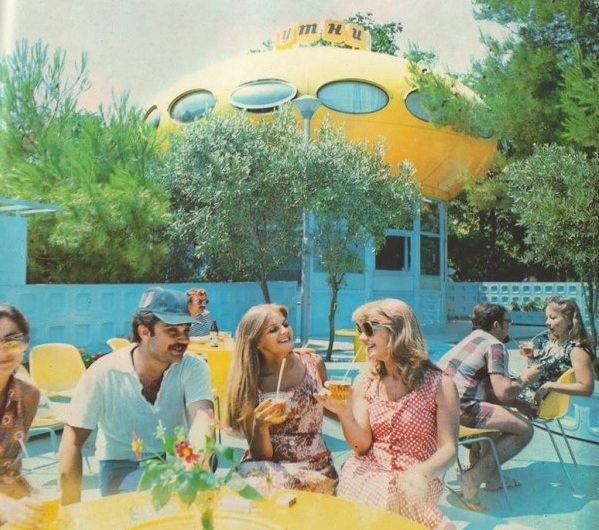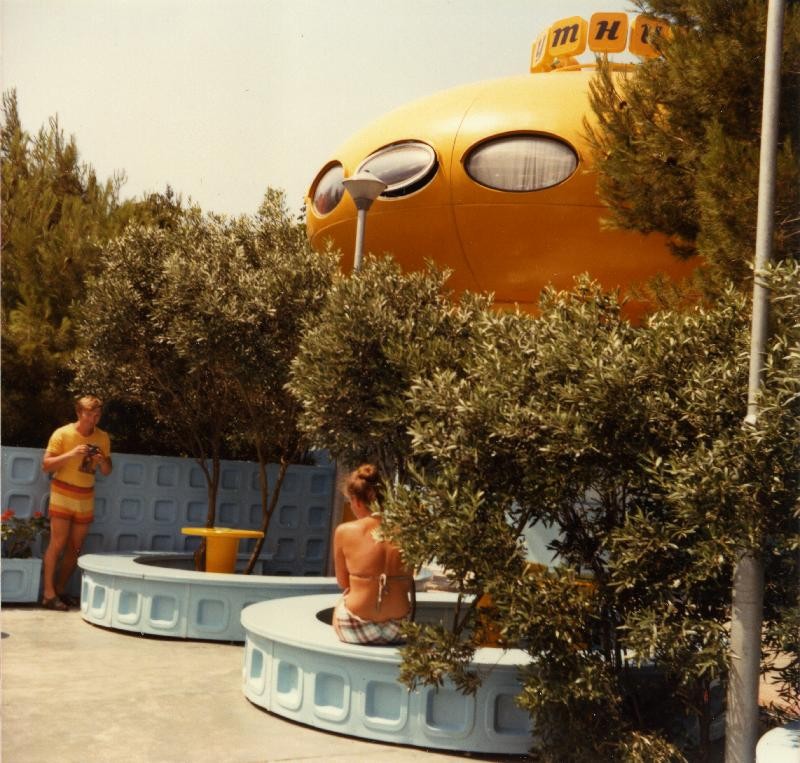They were invented by the Finnish architect Matti Suuronen. In 1965, a former classmate asked him to design a ski lodge that could be installed almost anywhere and warm up quickly. Suuronen studied the issue and chose an unexpected shape – an ellipse, as well as materials that were new for those times: fiberglass and polyurethane. Well, after that seriously thought about making houses of a new type. And he did it!
Futuro houses immediately attracted attention. Well, first of all, the form. They have been compared to “flying saucers”. At that time, people just landed on the moon, the interest in technology was extremely high, people were pouring into the cinema for science fiction. But this is not the only point. The ellipse house was erected anywhere, even in an open field, even on the shore and it was stable and well extinguished gusts of wind. And secondly, the Futuro babies turned out to be quite adapted for life.
In a matter of years, more than 100 such houses were installed around the world. Yes, they were embarrassing with the form, but otherwise – solid pluses. They are made of lightweight, durable plastic, consist of less than 20 blocks, assemble as a constructor in two days, weigh 4 tons and, if desired, can be transported unassembled by truck or even carried by helicopter.
You can put the Futuro anywhere, the main thing is to fix the base with the help of concrete platforms. So why did Suuronen’s company shut down and end his days as a barefoot?
It’s simple: in 1973, the oil crisis erupted and the prices of materials used for Futuro skyrocketed. They stopped buying houses. Today there are about 60 “flying saucers” left in the world. Some are in a museum (for example, at the WeeGee Exhibition Center in Espoo), others have become playgrounds or even part of a nightclub.
How did they come to us? There are two main versions on this score. According to the first, in 1969, Finnish President Urho Kekkonen, known for his love of skiing and mountain hiking, visited the Caucasus on an unofficial visit and was so delighted with the local beauty that he decided to thank the hospitable hosts. The gift was three plate houses, made according to the design of the then most fashionable Finnish architect.
According to another, more realistic version, the Soviet Union was going to purchase several dozen futuristic objects specifically for the 1980 Olympic Games in Moscow. The “plates” were supposed to accommodate shops, cafes and kiosks with souvenir products. But after Soviet troops entered Afghanistan in 1979, sanctions were imposed on the country and supplies were stopped. Only three copies reached the USSR.
One of them ended up in the Crimean village of Gurzuf – in the 1980s, right on the embankment, there was a popular cafe “Plate”. The institution worked for more than three decades, then stood closed for several years and, according to rumors, was reanimated a couple of years ago. Now there is a bar with a disco again.
You could visit this misguided bar in Crimeawith the Yucca Tours!




Another instance landed in Dombai at an altitude of 2250 meters above sea level and became the Tarelka hotel. This is the only Futuro that is used exactly as it was intended – a winter home for skiers. The hotel, by the way, is still in operation, and anyone who wishes can stay there. According to the information on the page in social networks, “due to its unique design features, the hotel is well heated, and on cold winter evenings the temperature in it does not drop below +22 ° C.”

The third “plate” came to Krasnodar. And unexpectedly it landed not somewhere on Krasnaya, but became an important attraction of one of the sleeping quarters of the city. The creation of the fashionable Finnish architect Matti Suuronen found its permanent place on Atarbekova Street, where it is located now – next to the heating main, shabby Khrushchev buildings and parking courtyards.
